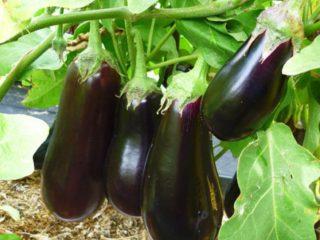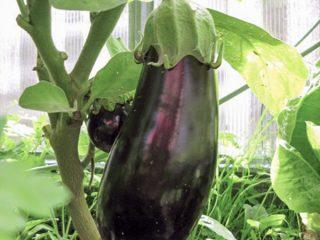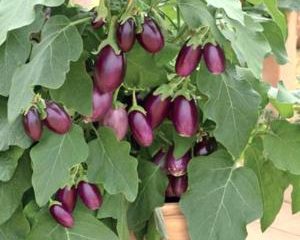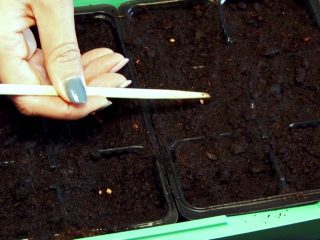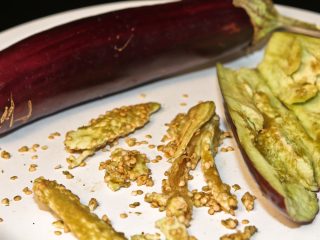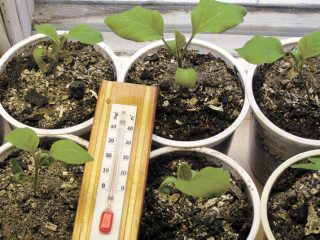Content
Less experienced gardeners are advised to choose eggplant hybrids rather than varieties. They are distinguished by greater endurance to negative external influences, better immunity, and good yield. The hybrid eggplant Fabina F1 meets all these criteria, and as an additional bonus, its taste can be noted.
History of selection
Fabina F1 is a first generation hybrid of eggplants originally from France. The originator is the well-known agricultural company “Claus”. In its homeland, it appeared in the “open access” in the early 2000s; an application for registration for sale in Russia was submitted in 2005. The hybrid passed the necessary official variety tests quickly. Since 2007, it has been listed in the domestic State Register of Selection Achievements.
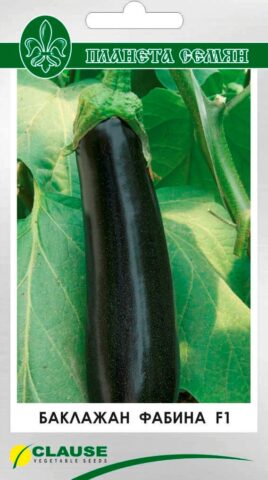
In Russia you can buy Fabina F1 eggplant seeds produced both by the originator and by domestic agricultural companies under license
Description and characteristics of eggplant Fabina F1
Externally, Fabin F1 eggplant bushes do not stand out among their “relatives” in any way. However, their fruits immediately attract attention with their external presentability.Therefore, the hybrid is valued not only by amateur gardeners, but also by professional farmers.
Appearance
Fabina F1 eggplant bushes reach a height of 45-60 cm. The plants are semi-spreading, the stem is quite powerful, erect, and can withstand the weight of the harvest.
The bushes are densely leafy. The leaf blades are large, the edges are cut with clear “teeth”. The flowers are also large, bisexual, collected in inflorescences of 2-7 pieces.
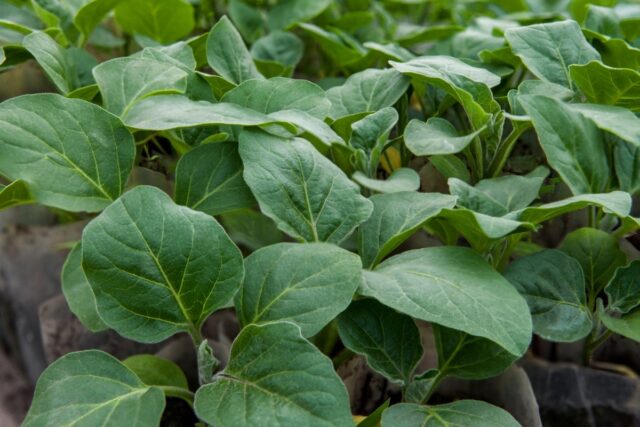
The hybrid is characterized by an almost complete absence of “edge” on the stem and an inconspicuous ink-violet tint
The fruits of the Fabina F1 hybrid are cylindrical, with a very dark purple skin, which from a distance appears black, but in the sun it acquires a pronounced glossy tint. The spines on the stalk are few. The approximate length of the fruit is 20-23 cm, thickness is 4-5 cm.
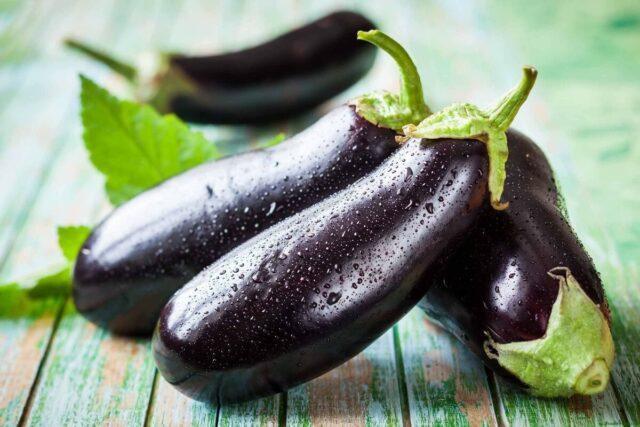
The weight of Fabina F1 eggplant varies between 160-220 g
Taste and purpose
The skin is thin, almost imperceptible when eaten, but at the same time dense, ensuring safety during transportation over long distances and keeping quality at 90%. The pulp is whitish or greenish, dense and very delicate in texture.
The taste of Fabina F1 eggplants is officially rated as “excellent”. The absence of bitterness is inherent at the genetic level. The “mushroom” notes of the aftertaste are clearly expressed. They are preserved both in any dishes after heat treatment and in homemade preparations.

In terms of use in cooking, the hybrid is universal
Ripening time
According to the ripening period, Fabina F1 eggplant belongs to the mid-season category. Harvest time occurs in August-September; 90-105 days pass from the moment the seeds germinate. The exact timing depends on how favorable the weather was in the summer.
Productivity
The yield of eggplant Fabina F1, demonstrated during variety trials in Russia, amounted to 306-355 centners per hectare. According to this indicator, the hybrid was significantly “ahead” of the varieties chosen as “reference” - Almaz and Lebediny (240-340 c/ha).
6-9 Fabina F1 eggplants ripen on the bush at the same time. Their regular cutting stimulates the formation of new fruit ovaries. Considering that the fruiting period of the hybrid is extended, an amateur gardener can count on 7-7.5 kg/m².
Growing regions
Officially, Fabin F1 eggplants are recommended by the State Register for cultivation in the North Caucasus. However, it does well indoors and in regions with a temperate climate, in almost the entire European part of Russia.
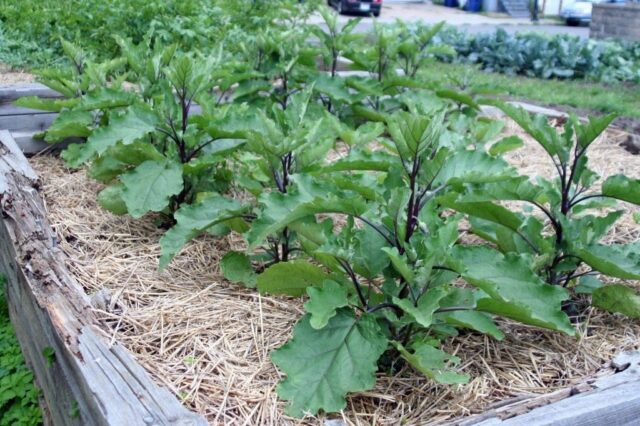
Of the former Soviet republics, culture has taken root best in Moldova and Ukraine
Harsh conditions are too uncomfortable for a hybrid. In the Urals, Siberia, and the Far East, plants develop slowly, the yield of Fabin F1 eggplants is significantly reduced, and the taste of the fruit deteriorates.
Advantages and disadvantages
Fabina F1 eggplants reach technical ripeness in 50-55 days. Fruits, the length of which does not exceed 10-15 cm, are considered delicacy; their flesh is more tender and juicier than that of fully ripe ones.
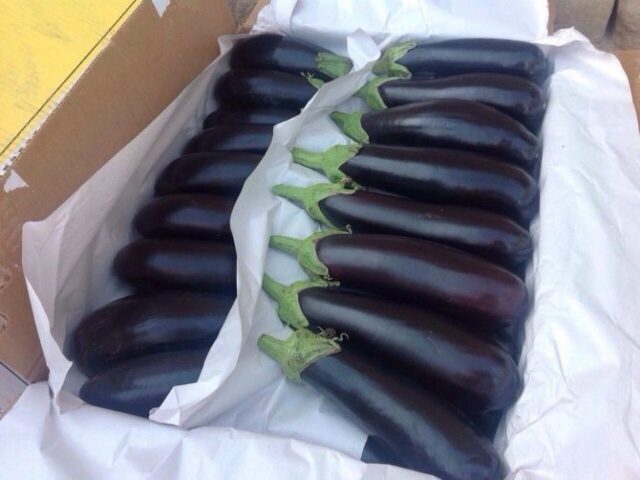
After heat treatment, the pulp of Fabina F1 eggplants retains its density and uniformity of texture and does not turn into “mush”
Pros:
- general endurance and “stress resistance”, the ability to survive many vagaries of the weather without harm;
- yield is consistently above average for the crop;
- extremely high percentage of marketable fruit yield;
- fruiting extended over several months;
- the presence of immunity against verticillium, protection from spider mite attacks, generally good resistance to pathogens and pests with proper care;
- excellent transportability and keeping quality;
- comparative compactness of plants;
- a powerful stem that allows you to do without gartering and installing supports;
- external presentability, correct shape, one-dimensionality of the fruit;
- excellent taste, thin skin, minimum seeds in the pulp;
- universal purpose of Fabina F1 eggplants in cooking.
Minuses:
- the inability to obtain seeds from independently grown fruits for planting next year;
- few, but clearly noticeable thorns on the stalk when harvesting with bare hands;
- requirement for regular watering and good lighting.
Growing seedlings
Fabina F1 eggplant seeds are sown no earlier than the end of February and during March (depending on the region). Pre-planting preparation includes dressing in a solution of a fungicide and a biostimulator.
At a temperature of 24-27 °C and an air humidity of 70-75%, seedlings from Fabina F1 eggplant seeds appear quickly (within 8-10 days) and “harmoniously”. If it drops to 15 °C, the seedlings stop developing. The critical minimum at which they die is 12-13 °C. Caring for them does not differ from the standard for any seedlings, and the same is true for their maintenance conditions.
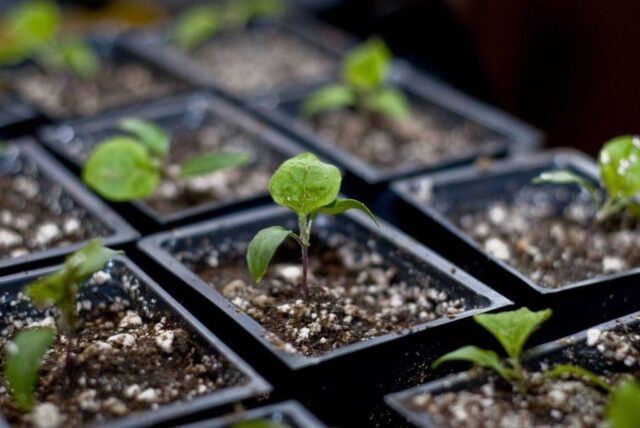
To avoid picking, it is advisable to immediately plant the seeds in separate containers filled with universal soil for seedlings
Transplanting seedlings into the ground
Fabin eggplant seedlings are transferred to the beds only when the likelihood of return frosts is minimized. In central Russia this is the second half of May. Seedlings at the age of 45-50 days already stretch up to 10-12 cm and have 4-6 true leaves.The recommended planting pattern is 30-40*70-80 cm.
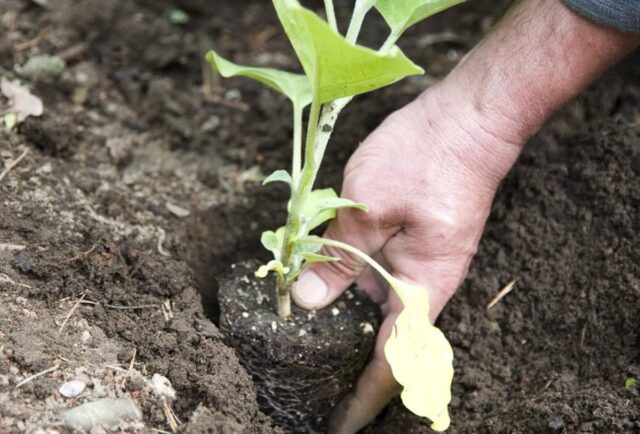
2-3 plants are placed per 1 m²
Further care
Mandatory agrotechnical measures for Fabina F1 eggplants:
- Watering. When there is a lack of moisture, buds, flowers and ovaries fall off en masse; when there is too much moisture, the roots quickly rot. Fabin F1 eggplants are watered as the surface layer of the substrate dries 1.5-2 cm deep (once every 5-7 days). The norm is 12-15 l/m².
- Feeding. Since the yield of the hybrid is above average, it is advisable to use complex specialized fertilizers. For the first time, the bushes are fed 12-15 days after planting in the ground, then at intervals of 2.5-3.5 weeks (up to 5 times per season). After flowering begins, fertilizers containing a lot of nitrogen are not suitable.
- Mulching. Allows you to increase the intervals between waterings, loosen and weed the beds less often. Provides protection against certain pests.
- Preventive treatments. If the disease develops in neighboring beds or “massive” pest attacks, it is recommended to be on the safe side by spraying the Fabin F1 eggplants in advance with a solution of a suitable insecticide or fungicide.
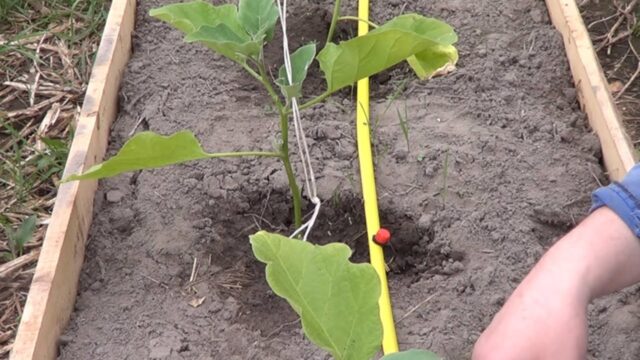
Drops of water when watering should not fall on the plants.
Conclusion
Eggplant Fabina F1 is valued by both amateur gardeners and professional farmers.Among its undoubted advantages is general endurance, including the ability to resist the effects of negative environmental factors and good immunity, comparative ease of care, very good yield, and outstanding taste of the fruit.
Reviews from gardeners about the eggplant variety Fabina F1
